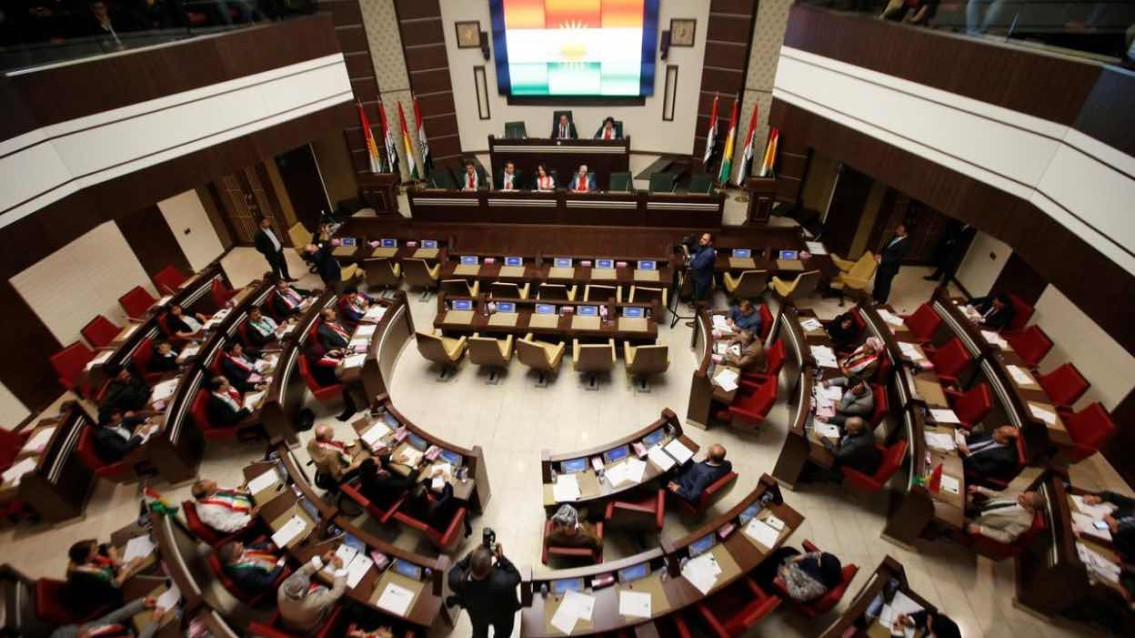The Kurdish Struggle for Unity: A Path to Autonomy
The Kurdish Struggle for Independence and the Challenges of Regional Rivalries in the Middle East
Washington, DC - Sangar Akrayi
| Atualizado em

WASHINGTON, DC - The Middle East has long been a region of conflict and shifting alliances, but few struggles have been as enduring—or as heartbreaking—as that of the Kurdish people. Spread across four major countries—Turkey, Iraq, Iran, and Syria—the Kurds are one of the world’s largest stateless nations. Despite a shared cultural heritage and common aspirations, they have often been divided by internal rivalries and external pressures. Recent events in Syria and the broader region have only underscored the urgency of the Kurdish question: Can Kurds truly unite in pursuit of their shared goals, or will internal divisions continue to hold them back?
The Weight of History
The divisions among the Kurdish people are not accidental; they are the product of history. After World War I, colonial powers carved up the Middle East through the Sykes-Picot Agreement, drawing artificial borders that ignored ethnic and cultural realities. The Kurdish homeland was fragmented, and Kurds found themselves minorities in newly created states. Over time, Kurds in different countries developed distinct political goals and strategies, shaped by the pressures and opportunities they faced.
In Iraq, for example, the Kurds have established a degree of autonomy with the Kurdistan Regional Government (KRG). Meanwhile, in Syria, the Kurdish-led administration in the northeast has gained international attention for its fight against ISIS and its experiment in grassroots democracy. Yet these successes have often been overshadowed by infighting—such as tensions between the KRG and the Syrian Kurdish Democratic Union Party (PYD)—which regional powers have eagerly exploited.
The Probability of a “New Sykes-Picot”
As the Middle East continues to face instability and shifting alliances, some have speculated that the region may see a redrawing of borders—a “new Sykes-Picot.” For the Kurds, this raises a tantalizing possibility: Could a new Kurdish state emerge from the ashes of ongoing conflicts in Iraq and Syria?
The probability of such a development is difficult to gauge, but several factors suggest that it is not entirely out of reach:
- Fragmentation of Regional States
The weakening of central governments in Iraq and Syria has created power vacuums, allowing Kurds to assert greater autonomy. In Iraq, the KRG already functions as a quasi-state with its own government, military, and foreign relations. In Syria, the Autonomous Administration of North and East Syria (AANES) has established a de facto self-rule system. If these trends continue, the creation of a Kurdish state could become a realistic outcome. - Changing Global Alliances
The international community’s shifting priorities could also play a role. Western powers, particularly the United States and European countries, have historically supported Kurdish groups in their fight against terrorism. While this support has often been tactical rather than strategic, growing disillusionment with authoritarian regimes in the region could lead some global actors to view a stable, democratic Kurdish state as a valuable ally. - Weakening of Regional Powers
Turkey, Iran, Iraq, and Syria have historically opposed Kurdish independence, fearing it would inspire separatist movements within their borders. However, internal challenges—such as Turkey’s economic struggles, Iran’s political unrest, and Iraq’s fragile governance—may reduce these countries’ ability to suppress Kurdish aspirations.
That said, the possibility of a new Sykes-Picot that results in a Kurdish state remains fraught with challenges:
- External Opposition: Regional powers like Turkey and Iran are unlikely to accept the creation of an independent Kurdistan without fierce resistance.
- Internal Divisions: Kurdish political factions must overcome their rivalries to present a united front, or they risk losing any opportunity to capitalize on regional instability.
- International Hesitancy: While some global actors might support Kurdish autonomy, the creation of a new state would likely face significant opposition due to concerns about regional stability.
Kurd vs. Kurd: A Painful Reality
One of the hardest questions for Kurds to ask themselves is this: Are we our own best allies, or are we sometimes our own worst enemies? The truth is difficult to face. While there is no denying the shared desire for freedom and independence, Kurdish factions have often been at odds. Political rivalries between groups like the Kurdistan Democratic Party (KDP) and the Patriotic Union of Kurdistan (PUK) in Iraq, or ideological differences between the KRG and the PYD, have sometimes escalated into outright conflict.
These internal divisions have left the Kurdish cause vulnerable to manipulation. Regional powers such as Turkey, Iran, and Syria have repeatedly used Kurdish rivalries to divide and weaken them, ensuring that no single Kurdish entity becomes strong enough to pose a challenge to their authority.
What Needs to Change?
Achieving unity among Kurds will not be easy, but it’s not impossible. Here are some practical steps that could help:
- Put Common Goals First
Kurdish leaders must prioritize the shared dream of independence and autonomy over personal or political rivalries. This means creating spaces for dialogue and compromise, even when disagreements run deep. - Strengthen Grassroots Movements
True unity begins with the people. Ordinary Kurds—whether in Erbil, Qamishli, Diyarbakır, or Sanandaj—must see themselves as part of a shared struggle. Efforts to promote Kurdish culture, language, and history can help build a sense of solidarity that transcends borders. - Learn from Past Mistakes
Kurdish history is full of painful lessons about the dangers of internal divisions. These lessons must not be ignored. Avoiding infighting and focusing on collaboration will strengthen the Kurdish position in a region that thrives on exploiting weakness. - Engage Strategically with the World
While unity is essential, Kurds cannot achieve their goals in isolation. Building alliances with international powers is crucial, but these relationships must be carefully managed. Over-reliance on any single ally, as seen in the U.S. withdrawal from parts of Syria, can leave Kurds vulnerable. - Invest in Economic Stability
Economic strength is a cornerstone of political power. Kurdish regions, particularly in Iraq and Syria, have significant natural resources. Ensuring that these resources are managed transparently and equitably can provide a foundation for long-term stability.
A Vision for the Future
The dream of Kurdish independence is not just about drawing new borders—it’s about creating a future where Kurds can live with dignity, free from oppression and division. But this dream will remain out of reach unless Kurds come together to support one another.
Unity doesn’t mean erasing differences or ignoring disagreements. It means recognizing that the things that bind the Kurdish people together—language, culture, and a shared vision of freedom—are far more important than the things that divide them.
Suppose Kurds can overcome their internal divisions and present a united front. In that case, they may secure autonomy and become key players in shaping a more stable and equitable Middle East. While the future is uncertain, the hope for a Kurdish state remains alive—perhaps closer than ever before.
